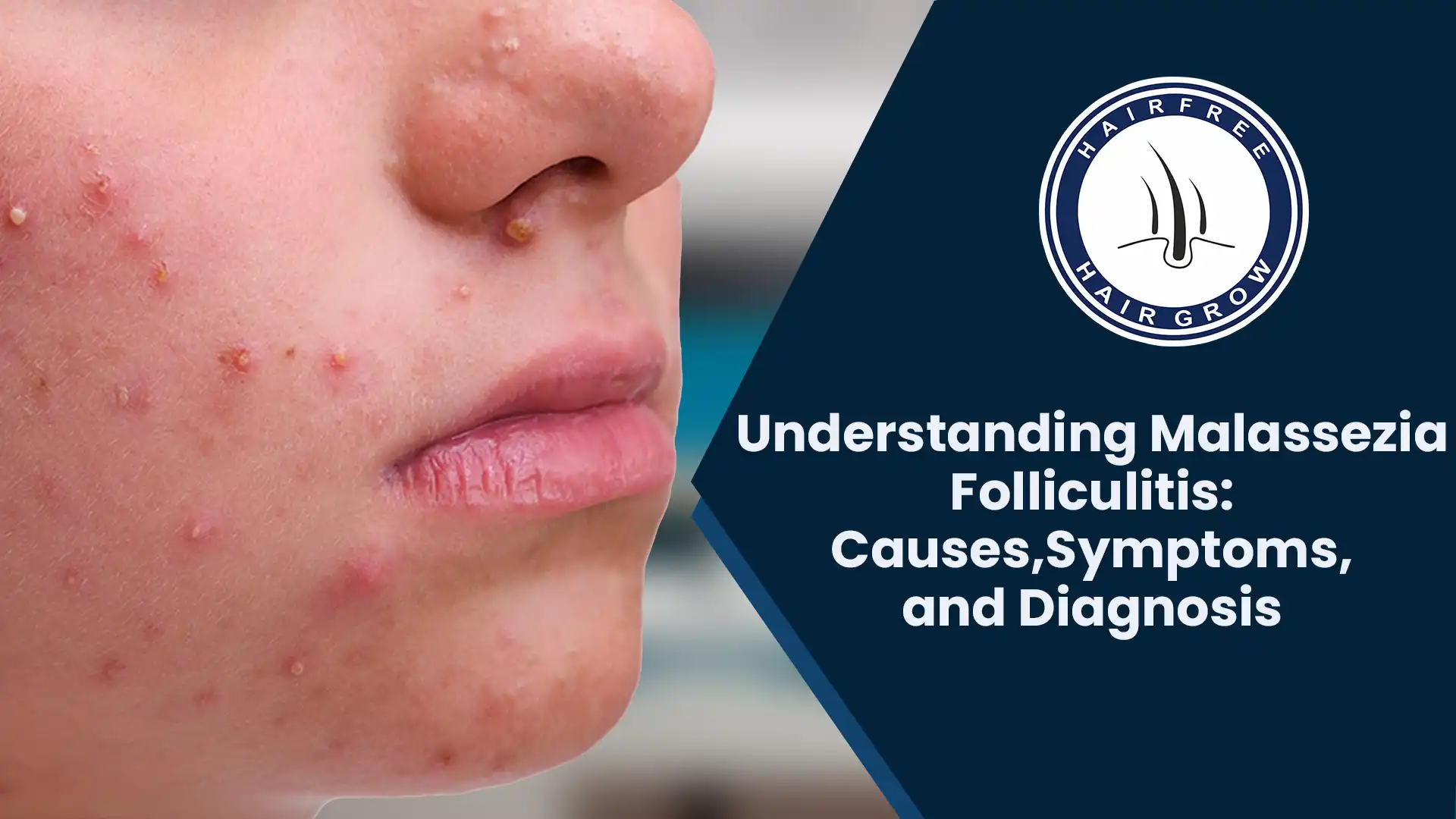
What is Scalp Folliculitis? Causes, Treatment, & Prevention
Scalp Folliculitis is a skin condition where the hair follicles on the scalp become inflamed. This inflammation can be caused
Folliculitis is the name given to a group of skin conditions in which there are inflamed hair follicles. There is always a red spot with a pustule on the skin. Folliculitis may be superficial or deep. It can affect any place where there is a presence of hair, including chest, buttocks, back, arms, and legs. Acne and its variants are also types of folliculitis.

Infection: Folliculitis can be caused by various microorganisms, including bacteria, yeasts, fungi, viruses, and parasites.
Occlusion: Blockage of the hair follicles, often due to factors like tight clothing, excessive sweating, or use of occlusive skincare products.
Irritation: Friction from shaving, harsh chemicals, or abrasive clothing can trigger folliculitis.
Skin diseases: Underlying skin conditions such as eczema or dermatitis can contribute to the development of folliculitis.
Red spots with pustules on the skin
Itching and discomfort in the affected area
Small, pus-filled bumps around hair follicles
Tenderness and swelling
Medication: Topical or oral antibiotics may be prescribed to target bacterial infections. Antifungal or antiviral medications are used for fungal or viral folliculitis, respectively.
Warm compresses: Applying warm compresses to the affected area can help reduce inflammation and promote healing.
Avoidance of irritants: Identifying and avoiding potential irritants or allergens can prevent further aggravation of folliculitis.
Gentle skincare: Using mild, non-irritating cleansers and avoiding harsh scrubbing can help maintain skin hygiene.
While hair loss due to folliculitis is usually not significant, it is important to address and treat the condition promptly to prevent further complications. Ignoring folliculitis can lead to more severe forms of hair loss. Treatment that addresses the underlying cause of irritation and inflammation can help stop hair loss in cases of folliculitis.
If you are experiencing symptoms of folliculitis or have concerns about hair loss, we recommend seeking professional advice from a dermatologist or hair specialist. At Hair Free Hair Grow, our experts can provide you with the best solutions for your specific needs. Don’t wait, schedule your appointment today and get the help you deserve.

Scalp Folliculitis is a skin condition where the hair follicles on the scalp become inflamed. This inflammation can be caused

Dealing with skin issues can be a real challenge, especially when it comes to conditions like Malassezia Folliculitis. If you’re

Malassezia folliculitis, often mistaken for acne, is a skin condition caused by an overgrowth of yeast called Malassezia. This yeast
Find Out in 3 Minutes, Your Hair Problem Solution.
Folliculitis is inflammation of hair follicles, usually due to infection, friction, or irritation. It looks like red bumps or pimples but is more localized around follicles. Acne, on the other hand, is driven by oil gland blockage and hormones. While they look similar, their causes and treatments are quite different.
Folliculitis can be triggered by bacteria, fungi, viruses, or physical irritation like shaving or tight clothing. People with weakened immunity, diabetes, or frequent skin damage (from sweating or friction) are more at risk. Even using hot tubs or sharing razors can increase the chances of developing folliculitis.
Some types of folliculitis—especially bacterial or fungal—can spread through close skin contact, shared towels, or personal grooming tools. It’s not always contagious, but practicing good hygiene and avoiding sharing personal items is important to prevent its spread. Deep or chronic cases rarely spread but still need medical care.
Bacterial folliculitis usually causes red, pus-filled bumps and tenderness. Fungal folliculitis tends to itch more and may not have pus. Viral types like herpes folliculitis often cause painful blisters. A dermatologist can diagnose the exact cause with a physical exam or lab tests, especially in persistent or recurring cases.
Topical antibiotics (like mupirocin) or antifungal creams are commonly used. For severe cases, oral medications may be needed. Warm compresses help reduce swelling. Keeping the area clean, dry, and avoiding tight clothing also helps. A dermatologist may recommend medicated shampoos or deeper treatments for scalp folliculitis.
Yes, shaving and waxing can irritate or damage hair follicles, making them prone to folliculitis. To prevent it, always shave with a clean razor, use shaving cream, and avoid going against hair growth. Aftercare matters—apply soothing lotions and avoid tight clothes to reduce friction and bacterial buildup.
Usually, folliculitis is harmless and treatable. But if it’s recurrent or doesn’t respond to treatment, it might signal underlying issues like diabetes, immune suppression, or chronic skin conditions. Rarely, deep folliculitis may lead to scarring or boils. Persistent cases should always be evaluated by a dermatologist.
Warm compresses, antibacterial washes (like benzoyl peroxide), and oatmeal baths can help soothe mild folliculitis. Always use clean razors and wear loose, breathable clothes. Avoid harsh scrubbing. Aloe vera or tea tree oil may offer relief, but for lasting results, pair home care with proper medical advice if needed.
Mild folliculitis often clears up in 7 to 10 days with proper care. Deeper or recurring cases may take several weeks and need prescription treatment. Healing also depends on avoiding triggers like friction or infected tools. Once treated, hair usually grows back unless scarring has occurred.
If your folliculitis keeps coming back, spreads, gets painful, or doesn’t improve with basic care, it’s time to see a dermatologist. Also seek help if you notice scarring, pus-filled lumps, or signs of infection. A skin expert can identify the cause and guide the best, long-term treatment plan.